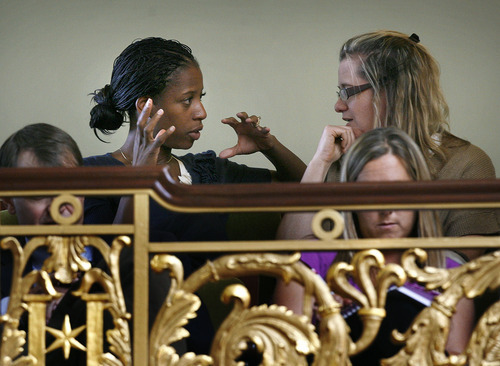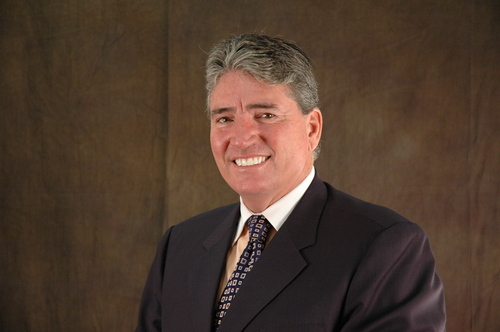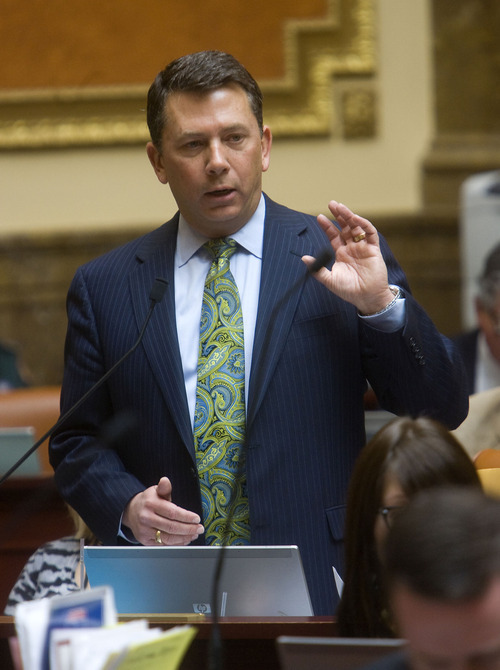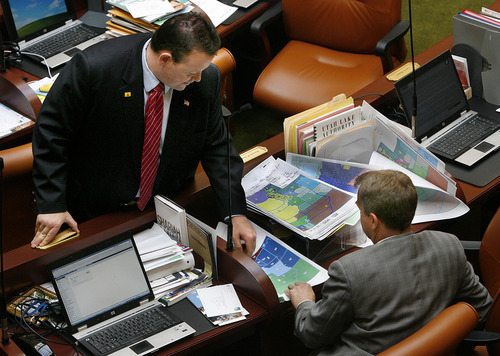This is an archived article that was published on sltrib.com in 2011, and information in the article may be outdated. It is provided only for personal research purposes and may not be reprinted.
Rep. Jim Matheson, D-Utah, says Republican legislators managed to scatter his current voters among all of the four new congressional districts they just drew. So he says three of those districts now tempt him as targets for a possible run — including maybe challenging GOP Rep. Jason Chaffetz. Or Matheson says he may run for governor or U.S. Senate instead.
"It's the result of political gymnastics," Matheson said about the new congressional map passed by the Legislature this week and awaiting the governor's signature. "Ten years ago, we went through a similar type of activity" of Republicans trying to draw extra Republicans into his district and exclude Democrats. "So I'm not surprised by the outcome."
The new map, combined with Matheson's consideration of other races, are creating other political acrobatics, too.
A half-dozen Republicans are lining up to run against Matheson for Congress, but they are left wondering in which district such a race may occur. Five do not live in the new 2nd Congressional District drawn for him, and they are considering moving there or running from the outside.
Also, Democrats are planning a lawsuit to challenge the congressional map. Reform groups are looking at starting a campaign to urge Gov. Gary Herbert to veto it. And, alternatively, a public relations campaign is being launched to convince Utahns that lawmakers listened to them in redistricting.
Todd Taylor, a consultant to the Utah Democratic Party, said its voter data shows that only 30 percent of Matheson's current constituents were drawn into his new 2nd District. Meanwhile, 39 percent were put into the new 3rd Congressional District where Chaffetz lives, 25 percent were put into the 4th Congressional District that has no incumbent and 6 percent were put into the 1st Congressional District of Rep. Rob Bishop, R-Utah.
Taylor said Democrats also figure that the new 2nd District is 65 percent Republican, the 4th is 62 percent Republican, the first is 72 percent and the 3rd is 74 percent.
About the new 2nd District drawn for him, Matheson said, "You know, it's no tougher than my district is now. ... It's about 65 percent Republican, too."
Matheson's new 2nd District has most of Democratic Salt Lake City, but has such conservative areas as southern Davis County and most of rural southern Utah. And new boundaries take away the east bench of Salt Lake County — areas that were keys to his victories — which are now in Chaffetz's new district.
"With so much of my current district in the 3rd, I'm considering running there," he said. "Besides I read that Chaffetz is considering running in the 4th."
Chaffetz had said he was considering running in the 4th District when he did not like earlier proposed maps. But he said on Tuesday after the final map was approved, "I'll be running in the 3rd District. I'll be happy finally to be living in my district, and I'm excited to be getting to know the people in that new district."
Matheson said the 4th District, which by Democratic Party figuring is now the least Republican of the districts, tempts him more than the 3rd District of Chaffetz.
That district includes western Salt Lake and Utah counties plus parts of Juab and Sanpete. State Rep. Carl Wimmer, R-Herriman, has announced he is running there, GOP Saratoga Springs Mayor Mia Love is also expected to be a candidate and state Rep. Steve Sandstrom, R-Provo, is considering it.
Matheson said he is also seriously looking at running for governor or for the U.S. Senate. He has not set a deadline for making a decision, but said it should be soon.
"What gives me confidence is I am known statewide. I have better approval ratings than any elected official in Utah. I think people like the way I conduct myself. I think the way I conduct myself is much different than the process the Legislature just went through drawing these maps," he said.
Meanwhile, many of the Republicans who have said they are considering running against Matheson do not live in the newly drawn 2nd District where he lives, including Morgan Philpot, Cherilyn Eagar, John Willoughby, Chuck Williams and Jason Buck. Another, state Rep. David Clark, R-Santa Clara, does lives in the district.
Philpot, who ran a close race against Matheson two years ago, said he intentionally took a short-term lease on a home in Orem because he was unsure where boundaries of the new 2nd District would be — and he wants to move into it if he runs there again. Williams, who now lives in Heber City, has said he plans to move into the district where he runs.
The others say they are looking at running from outside the district. For example, Eagar, who lives in Holladay and the new 3rd District, said Friday, "I don't think it matters as long as I live close to the district."
Clark, who does live in the district, said he has yet to decide whether to run for Congress, but said the new 2nd District map makes it more possible for someone from rural areas like him to win.
"I think our voices [in southern Utah] have been a little muted with so many people in Salt Lake Valley in the current district. I think the new district gives us more opportunity to have parity," he said.
Meanwhile, some groups are working to overturn the new maps.
"The maps are horrible," said Utah Democratic Party Chairman Jim Dabakis, adding he will make good on Democratic threats to sue to try to overturn them.
"We will be meeting with a legal panel of both national experts on redistricting and local … to see which of the many areas that the Republicans have overstepped" could be challenged in court, he said. "That should happen at the end of the week."
Utah Attorney General Mark Shurtleff said that in anticipation of such a lawsuit, he sent an attorney in his office to a seminar to get up to speed on redistricting lawsuits. He said if Democrats file a suit, "We'll be able to defend it."
Dabakis said Democrats intend to use the maps, and closed-door meetings by Republicans that led to final versions, as an issue in upcoming elections. "They went too far, and we may be able to explain that to the state, and they may end up paying a price."
Meanwhile, reform groups say they are urging people to contact Herbert to ask him to veto the congressional maps. "We are working on a campaign to have people email him to urge a veto," said Kelli Lundgren, with Represent Me Utah!
"The Legislature did not listen to the people. Most did not want Salt Lake County sliced up like it is," she said. "They wanted an open process, not leaders spending all day behind closed doors working on deals."
In contrast, a public relations campaign is being launched to convince Utahns that Republicans listened to them during the redistricting process, including a website called idrewthemap.com.
"At the end of the day the Legislature did pass the people's map. It's a map that was slightly changed, a slight deviation, about a 10 percent change from the map the people looked at and this has been the most open and transparent process that I've ever seen," said Jeremy Roberts, Utah County Republican Party secretary, who is orchestrating and paying for the campaign out of his political action committee.
Robert Gehrke and David Montero contributed to this story.Robert Gehrke and David Montero contributed to this story.











